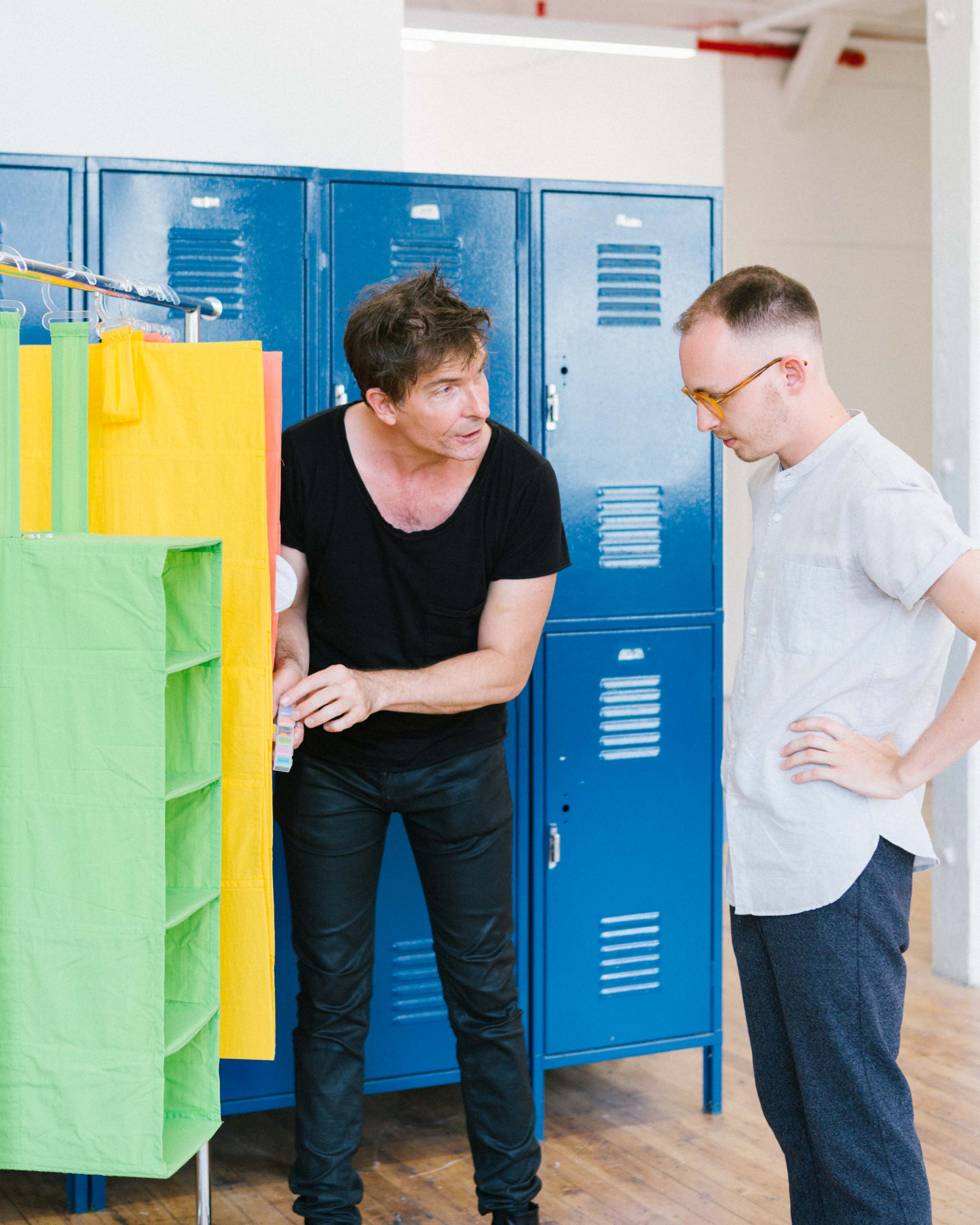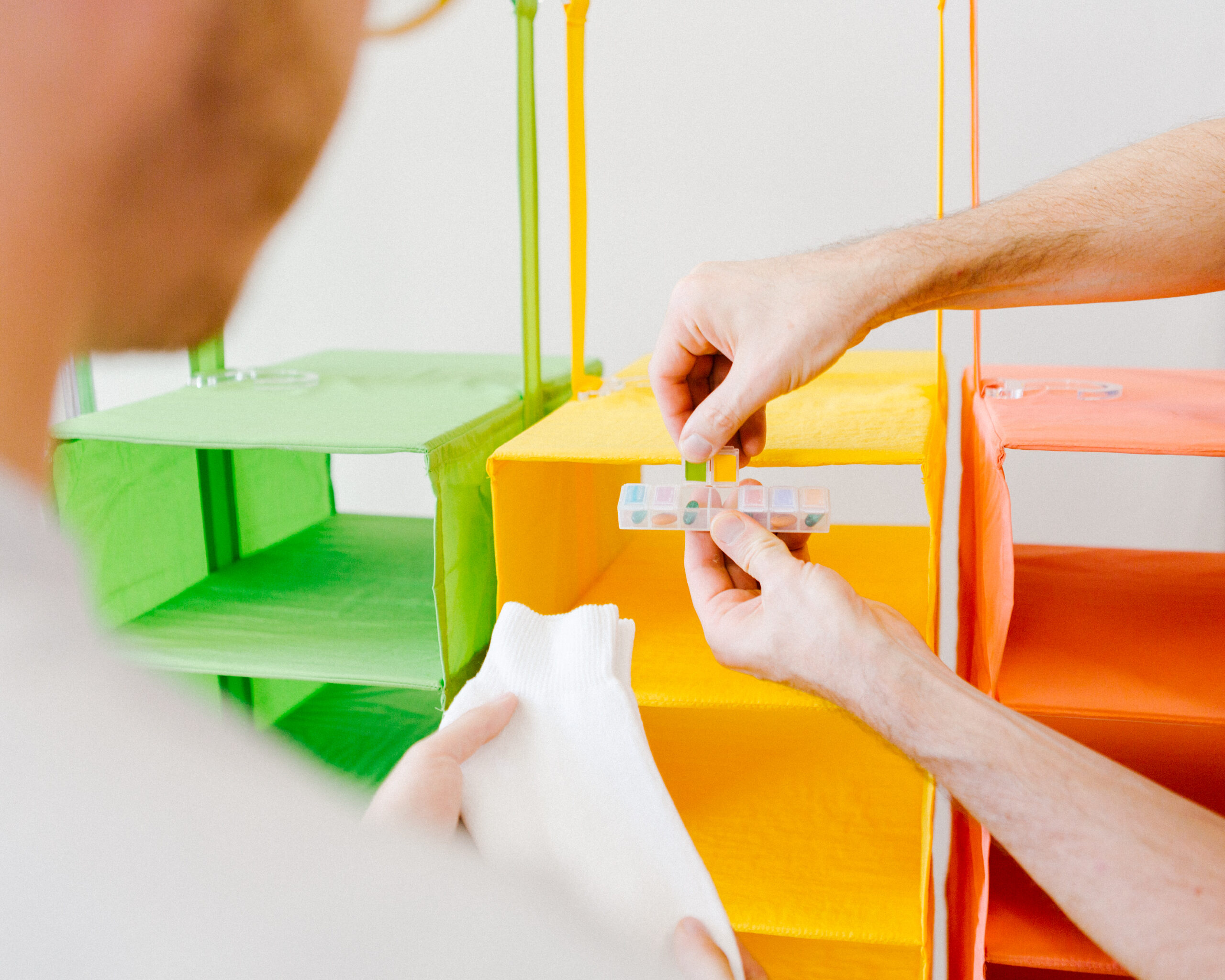From the pages of Prattfolio, this article is part of a series of conversations between faculty and students on the subject of student work. In this installment, Alex Schweder, Visiting Associate Professor of Industrial Design and Interior Design, and Aaron Ethan Green, MID ’18, discuss Green’s Pillbox for Clothes project.
More than 5 million people in America have Alzheimer’s disease, and according to the research of Visiting Associate Professor Alex Schweder, each person has three or four people who provide care. That means upward of 20 million Americans are managing the disease—and yet, there hasn’t been a movement to design for them. Schweder, himself a caregiver, created the Design for the Mind industrial design course to address this disparity, working with the organization CaringKind, which provides resources for people with Alzheimer’s and their professional and family caregivers. Last spring, student designs were showcased in the Design for the Mind installation at the 2017 International Contemporary Furniture Fair (ICFF) in New York City and recognized with an ICFF Editors’ Award.
Aaron Ethan Green: I came into this class thinking it’s “design for the mind,” my job is to create a relationship between somebody’s mind and a product they’re holding in their hands. But it’s more than that. There are often two people involved, the person with Alzheimer’s and the caregiver, and more than an object, I’m proposing a change in behavior that affects both those people. The product I make then becomes a facilitator of the relationship between them.
Alex Schweder: Something you noticed needed to be addressed is the idea that, when it comes to clothing, it can be difficult to distinguish between what’s clean and what’s dirty. With Alzheimer’s, sense of smell is one of the things that goes away. Do you want to describe what your project is—what is the object?
AEG: My project is called the Pillbox for Clothes. It’s a clothing organizer that piggybacks on the routine of using a day-by-day pillbox. Clothes are organized in a sequential way for the week like pills are in the box. Each column represents a day and holds all the clothes for that day. Then as clothes are taken out and worn, the column is folded aside to move on to the next day.

AS: I remember the moment when your research made a leap, when we were talking to caregivers at CaringKind and someone said, “The proof is in the pillbox.” This is where the relationship comes in, between the caregiver and the cared-for: Rather than argue about whether clothes have been changed based on the recollection of the person with Alzheimer’s, the caregiver can say, here’s your pillbox—it’s orange today and you’ve taken the pill. And here’s the orange clothing organizer and it’s full of clothes, so that means it’s time to change clothes. This project is in part about trying to avoid the struggle of a circular discussion.
AEG: Yes, it’s a communication device. It’s not just an organizer.
AS: One of the critiques that you got from the caregivers was that a hanging organizer is great for someone who lives in the suburbs who’s got a big closet, but we live in the city. So you came up with this ingenious way of taking a clothing organizer that’s a standard size and then folding it so the two sides would collapse.
AEG: I looked at organizers that are already on the market. This actually ended up revealing a design opportunity in a design flaw: The organizers I looked at are on a single axis, meaning things can fall out of them and they can be difficult to store. I had been thinking about ways to use the least amount of space, and my design ended up using the limitations of that existing design as an opportunity to build in a folding mechanism. I went through a lot of complicated accordion structures to get to this final prototype.
AS: As a professor, it was great to see all the different mechanisms, but then you need to consider, how is this going to be made?
AEG: We brought in a professional draper who laid the groundwork for how these would be produced. I don’t have a background in soft construction, so I needed to learn how to communicate with a person who has that knowledge to make my intended design.
AS: It’s important to realize when you need to let go of your design and let the expertise of another person inform the detailing and the way a product is made.
AEG: These interactions—as well as the research interactions with the caregivers, who are inventing solutions every day—were a valuable opportunity. That’s the job of an industrial designer at the end of the day; you’re a facilitator more than anything else.
